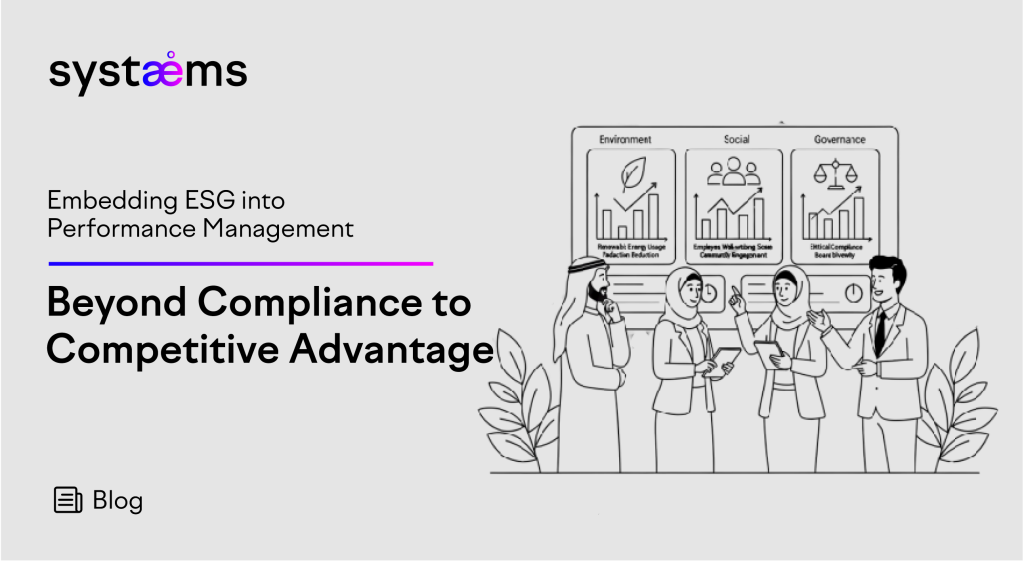Building a Performance-Driven Culture with KPIs and Data Insights
Empower teams with KPIs and data insights to foster accountability, agility, and sustainable growth.

Environmental, Social, and Governance (ESG) is no longer an optional disclosure exercise. Investors, regulators, customers, and employees expect organizations to demonstrate measurable ESG outcomes that directly influence business performance. This expectation has transformed ESG from a compliance requirement into a strategic imperative that defines competitiveness, resilience, and long-term growth.
At Systaems, we help organizations design and implement ESG-driven performance management systems that go beyond meeting regulations. Our approach ensures that ESG goals are embedded into corporate strategy, supported by robust data services and KPI frameworks, enabling organizations to translate commitments into measurable outcomes.
The integration of ESG into performance management is being driven by three powerful forces:
In this context, ESG performance is no longer about avoiding risk. It is about unlocking opportunities.
Traditional ESG reporting often focuses on disclosure, which is reactive and limited in impact. Leading organizations are moving beyond disclosure to embed ESG directly into strategic execution. This requires:
By shifting from reporting to measurable outcomes, ESG becomes a driver of sustainable growth.
A clear example of this shift can be seen at the Abu Dhabi Department of Energy (DoE), which partnered with Systaems to enhance performance management across its strategic initiatives. ESG considerations were integrated into both strategy execution and monitoring systems.
The department created ESG KPIs around energy efficiency, emissions reduction, and stakeholder engagement. These KPIs were embedded into performance dashboards, allowing leaders to track progress in real time. By doing so, DoE ensured compliance while also advancing its vision of sustainable energy transformation.
To achieve meaningful ESG integration, organizations should adopt the following best practices:
Organizations that successfully embed ESG into performance management systems gain significant competitive advantages:
When combined with strategy execution practices (see How to Build Resilient Strategy Execution in Uncertain Times), ESG integration enhances agility and long-term resilience.
Just as with performance management, ESG integration depends on reliable, timely, and transparent data. Key enablers include:
Systaems’ Data and Performance Services support organizations in designing ESG frameworks that are measurable, actionable, and aligned with global best practices.
Embedding ESG into performance management is not just about meeting compliance requirements. It is about creating long-term competitive advantage. Organizations that align ESG with strategy, supported by data-driven KPIs, achieve both sustainable growth and stakeholder trust.
At Systaems, we work with clients to build performance frameworks that balance profitability with responsibility. Our proven expertise in strategy integration, KPI design, and data services enables organizations to turn ESG commitments into measurable results.
👉 Ready to embed ESG into your performance management systems? Contact our experts to begin your journey toward sustainable growth.
Empower teams with KPIs and data insights to foster accountability, agility, and sustainable growth.
Shift focus from vanity metrics to outcome-driven measurement for impactful organizational performance.
Harness AI insights while ensuring human judgment maintains accountability, trust, and strategic balance.
